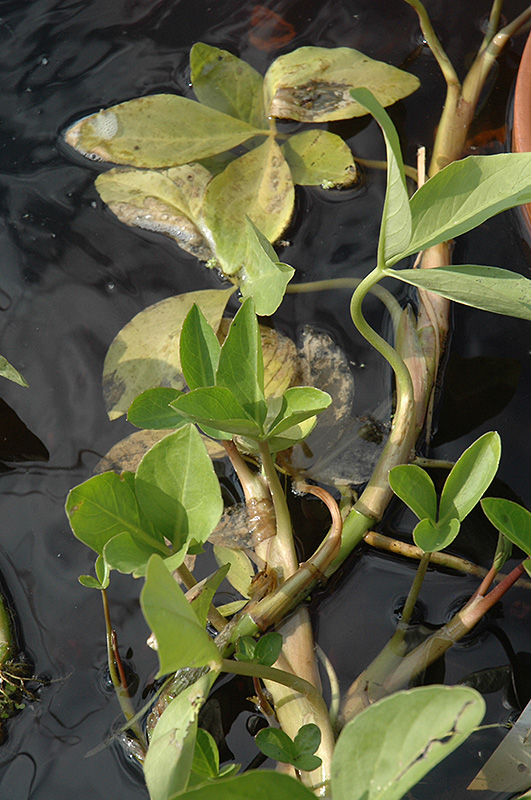Height: 12 inches
Spread: 24 inches
Sunlight:
![]()
![]()
Hardiness Zone: 2
Description:
An interesting variety for wet enviroments; stunning, frilly white flower clusters in spring, an excellent transitional foliage plant that thrives in water gardens or at the edge of a pond; able to form large colonies
Ornamental Features
Bog Bean features showy panicles of white star-shaped flowers rising above the foliage in late spring, which emerge from distinctive pink flower buds. Its attractive oval compound leaves remain green in color throughout the season.
Landscape Attributes
Bog Bean is an herbaceous perennial with a low habit of growth, spreading atop the surface of the water. Its medium texture blends into the garden, but can always be balanced by a couple of finer or coarser plants for an effective composition.
This plant will require occasional maintenance and upkeep, and should be cut back in late fall in preparation for winter. It is a good choice for attracting bees and butterflies to your yard. It has no significant negative characteristics.
Bog Bean is ideally suited for growing in a pond, water garden or patio water container, and is recommended for the following landscape applications;
- Water Gardens
- Naturalizing And Woodland Gardens
- Bog Gardens
Planting & Growing
Bog Bean will grow to be about 12 inches tall at maturity, with a spread of 24 inches. Its foliage tends to remain dense right to the water, not requiring facer plants in front. It grows at a fast rate, and under ideal conditions can be expected to live for approximately 10 years. As an herbaceous perennial, this plant will usually die back to the crown each winter, and will regrow from the base each spring. Be careful not to disturb the crown in late winter when it may not be readily seen!
This plant does best in full sun to partial shade. As an aquatic plant, it requires a suitable water garden environment and will benefit from special planting and ongoing care practices; consult one of our in-store experts for further details and instructions. It is particular about its soil conditions, with a strong preference for rich, acidic soils. It is somewhat tolerant of urban pollution. This species is native to parts of North America. It can be propagated by division.

